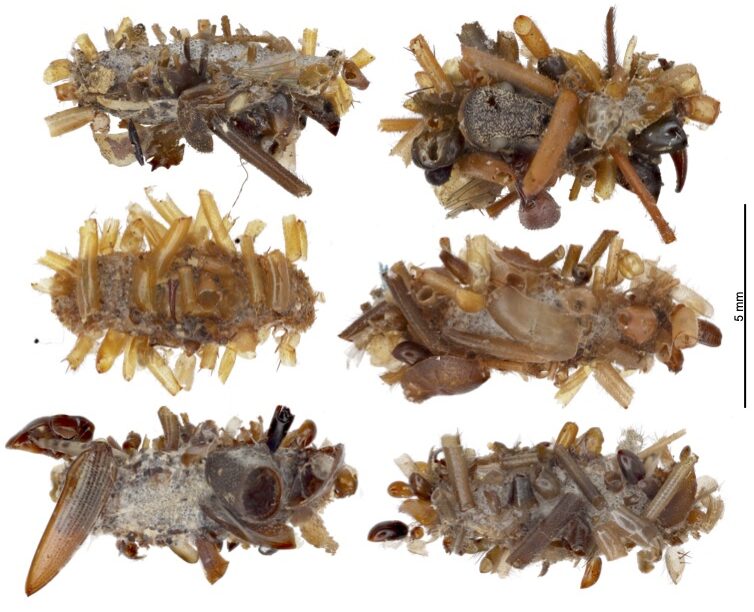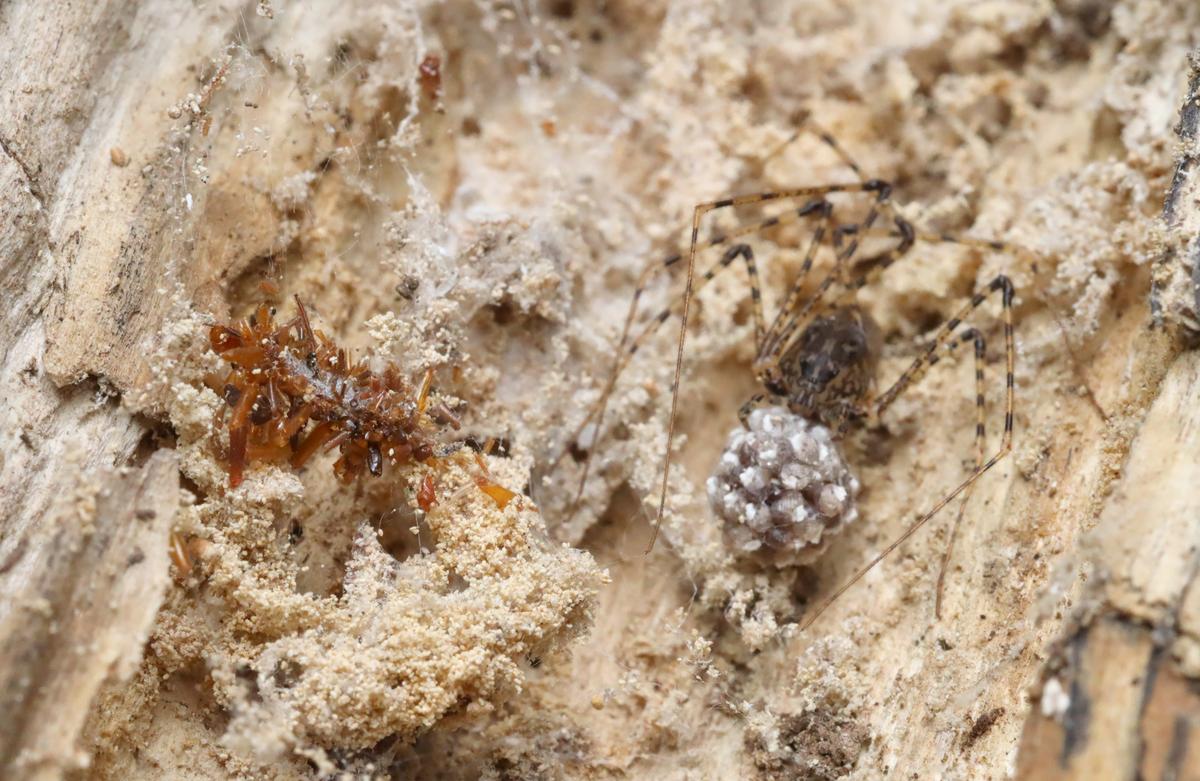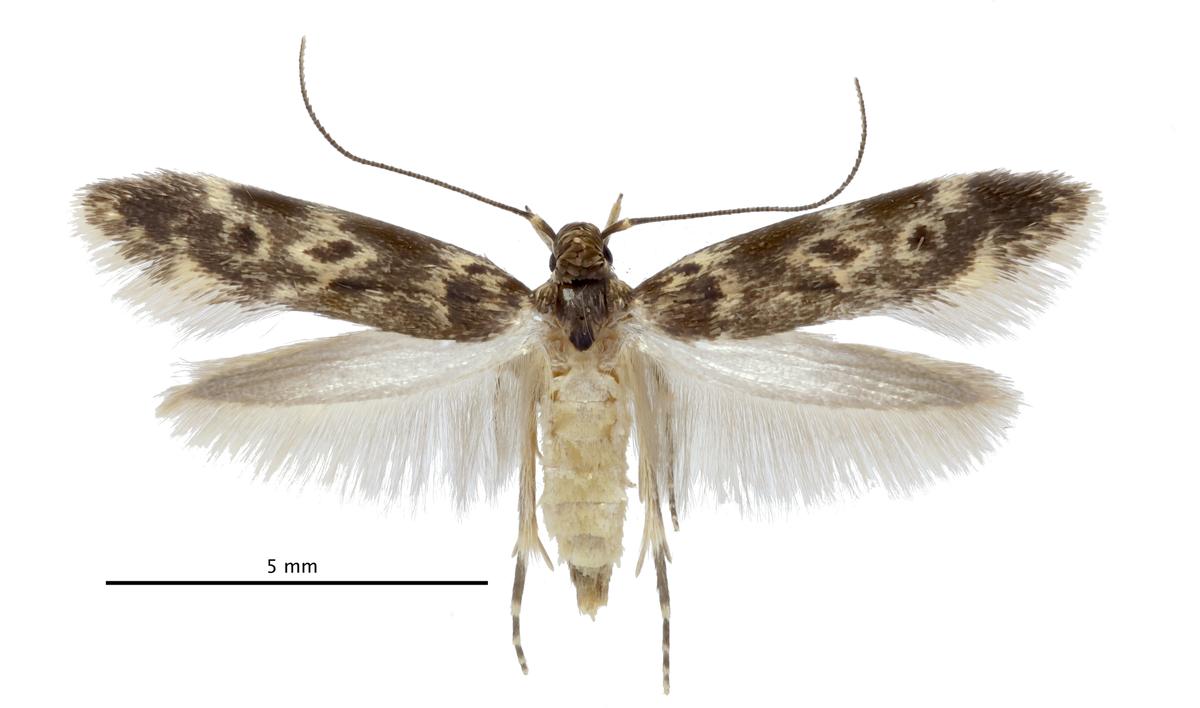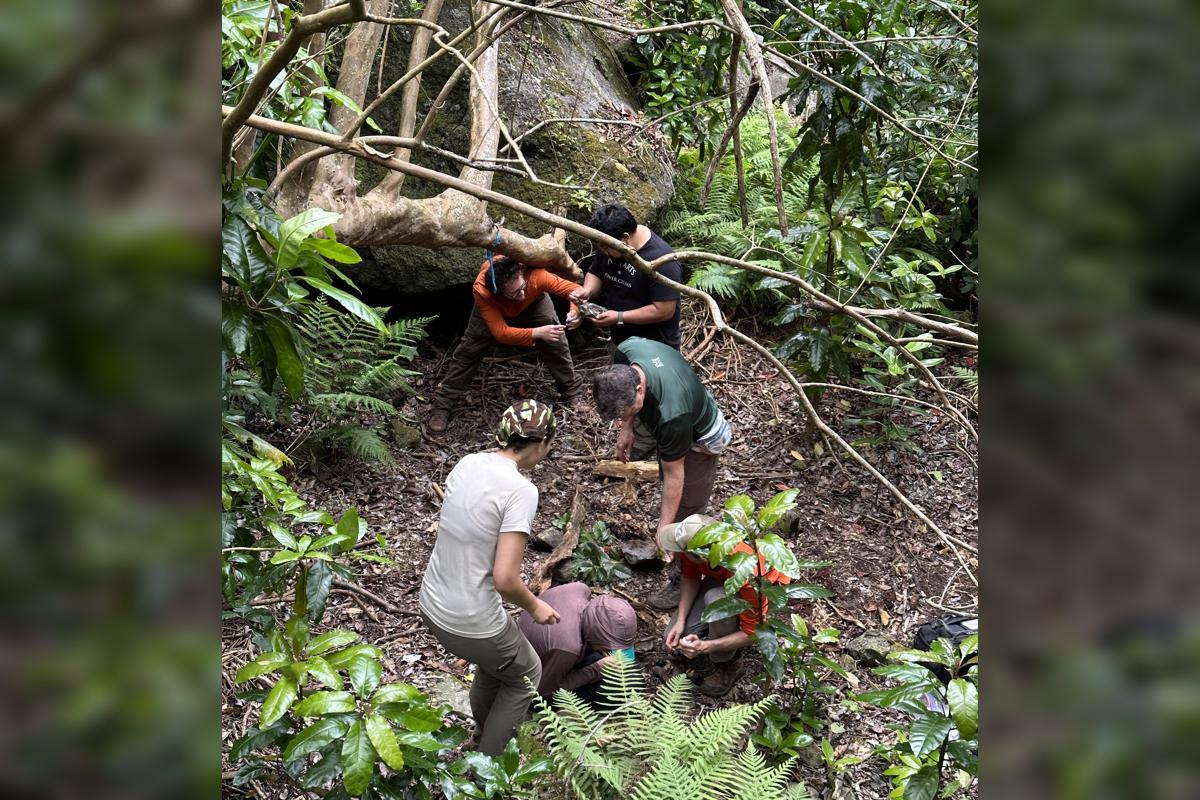Oahu, Hawaii —(Map)
Scientists in Hawaii have discovered a new species of moth, and its caterpillar has an unusual lifestyle. It lives in spiders’ webs, eating insects it finds there. To protect itself from the spiders, the caterpillar covers itself with body parts from dead insects. Scientists call it the “bone collector” caterpillar.
Caterpillars are the early stage in the development of moths and butterflies. Bone collector caterpillars are part of a group of caterpillars called “fancy case” caterpillars, which are only found in Hawaii. These caterpillars get their name because they cover themselves by spinning a case of silk. Some of them even decorate their silk cases with bits of things they find around them.

(Source: Insect Systematics and Biodiversity Lab, Entomology Section, CTAHR, University of Hawaii, Manoa.)
Bone collector caterpillars go a step further – they cover their cases with bits of body parts from dead insects. And they’re not just satisfied with any old parts they find. Instead, they construct their cases by carefully choosing bits of insect bodies and cutting them to just the size they need.
Why would a caterpillar go to so much trouble to decorate itself? The answer is because they live in spider webs – a very dangerous place for an insect. Spider webs are great places to find leftover food that the spiders didn’t eat, but the bone collector caterpillars don’t want to become food themselves.

(Source: Insect Systematics and Biodiversity Lab, Entomology Section, CTAHR, University of Hawaii, Manoa.)
By disguising themselves with pieces of dead insects, the caterpillars seem to fool the spiders into ignoring them. It’s almost like the spiders think the caterpillars are just a pile of trash. It’s a tough way to make a living, but it seems to work. Scientist Daniel Rubinoff said the first time he saw one, “I just couldn’t believe it.” He said he thought it had to be a mistake.
Their lifestyle isn’t the only thing that makes these caterpillars unusual. Almost all caterpillars eat plants. But a few unusual caterpillar species – like the bone collectors – are carnivores, or meat eaters. And bone collector caterpillars aren’t too choosy – they will even eat other bone collector caterpillars.

(Source: Insect Systematics and Biodiversity Lab, Entomology Section, CTAHR, University of Hawaii, Manoa.)
In time, bone collector caterpillars turn into moths.
Bone collector caterpillars are extremely rare. Dr. Rubinoff first discovered one in 2008. Since then, just 62 of them have been found in all. The insects are only found in a small area on the side of a mountain on Hawaii’s Oahu Island. They mainly choose spider webs in hollow spots in trees or in holes in rocks.

(Source: Insect Systematics and Biodiversity Lab, Entomology Section, CTAHR, University of Hawaii, Manoa.)
Since they only live in such a tiny area, spiders aren’t the only threats to these caterpillars. Over time, invasive species have been taking over Hawaii’s natural forests. As the forests around them change, it could become harder for the caterpillars to survive. Luckily, bone collectors seem to be able to manage, even in the webs of spiders that don’t originally come from Hawaii.
By studying the DNA of bone collector caterpillars, scientists have learned that they’re related to other fancy case caterpillars that lived on other Hawaiian islands over five million years ago – long before the island of Oahu even existed.
😕
This map has not been loaded because of your cookie choices. To view the content, you can accept 'Non-necessary' cookies.
